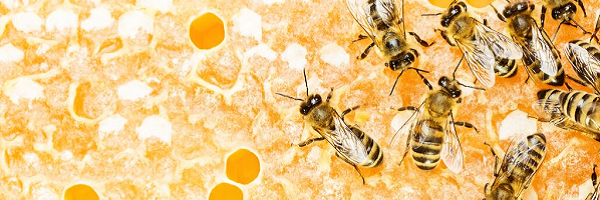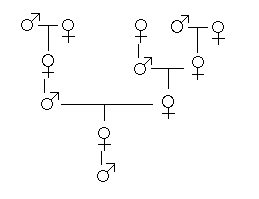
The Fibonacci sequence – 1, 1, 2, 3, 5, 8, .... – often comes up when we look at growth. An example is the family tree of bees. In every bee hive there is one female queen bee who lays all the eggs. If an egg is not fertilised it eventually hatches into a male bee, called a drone. If an egg is fertilised by a male bee, then the egg produces a female worker bee, who doesn't lay any eggs herself.

Now let's look at the family tree of a male bee called Bob. Bob (the male symbol at the bottom of the tree, a circle with above an arrow) has one parent (the queen bee – represented by the female symbol, a circle above a cross) who herself has two parents (since she comes from a fertilised egg). This means that Bob has two grandparents. His grandfather will only have one parent, while his grandmother will have two, so in total Bob has three great-grandparents. One of those will be male and therefore have one parent, while the other two are female and therefore have a total of four parents. So Bob has a total of five great-great grandparents. Continuing this you will find that Bob has eight great-great-great grandparents, thirteen great-great-great-great grandparents, and so on. 1, 1, 2, 3, 5, 8, 13... – It's the Fibonacci sequence all over again!
